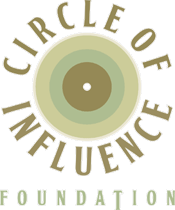I’ll be talking a lot here in coming weeks about Getting Things Done, a book by David Allen whose apt subtitle is “The Art of Stress-Free Productivity.” You’ve probably heard about it around the Global Interweb or have been buttonholed by somebody in your office who swears by GTD. (It probably takes a backseat only to the Atkins Diet in terms of the number of enthusiastic evangelists: sorry about that.)
Like I did the other day with Quicksilver, I wanted to provide a gentle, geek-centric introduction to Getting Things Done, so that you can think about whether it might be right for you. It also gives you time to pick up your own copy of the book and get a feel for how David’s system works. (You can support 43 Folders by buying the book from Amazon, but it’s also up at ISBN.nu and, of course, on shelves at your local bookstore). You’ll also eventually want to grab some of the other GTD essentials, like a ton of manila folders, a good label maker, and a big-ass garbage can. It’s time to get your act together, hoss.
The Problem with “stuff”
Getting Things Done succeeds because it first addresses a critical barrier to completing the atomic tasks that we want to accomplish in a given day. That’s “stuff.” Amorphous, unactionable, flop-sweat-inducing stuff. David says:
Here’s how I define “stuff:” anything you have allowed into your psychological or physical world that doesn’t belong where it is, but for which you haven’t yet determined the desired outcome and the next action step. [pg. 17]
Stuff is bouncing around in our heads and causing untold stress and anxiety. Evaluation meetings, bar mitzvahs, empty rolls of toilet paper, broken lawn mowers, college applications, your big gut, tooth decay, dirty underwear and imminent jury duty all compete for prime attention in our poor, addled brains. Stuff has no “home” and, consequently, no place to go, so it just keeps rattling around.
Worst off, we’re too neurotic to stop thinking about it, and we certainly don’t have time to actually do everything in one day. Jeez Louise, what the hell am I, Superman?
So you sprint from fire to fire, praying you haven’t forgotten anything, sapped of anything like creativity or even the basic human flexibility to adapt your own schedule to the needs of your friends, your family or yourself. Your “stuff” has taken over your brain like a virus now, dragging down every process it touches and rendering you spent and virtually useless. Sound familiar?
So how does GTD work?
This is a really summarized version, but here it is, PowerPoint-style:
- identify all the stuff in your life that isn’t in the right place (close all open loops)
- get rid of the stuff that isn’t yours or you don’t need right now
- create a right place that you trust and that supports your working style and values
- put your stuff in the right place, consistently
- do your stuff in a way that honors your time, your energy, and the context of any given moment
- iterate and refactor mercilessly
So, basically, you make your stuff into real, actionable items or things you can just get rid of. Everything you keep has a clear reason for being in your life at any given moment—both now and well into the future. This gives you an amazing kind of confidence that a) nothing gets lost and b) you always understand what’s on or off your plate.
Also built-in to the system are an ongoing series of reviews, in which you periodically re-examine your now-organized stuff from various levels of granularity to make sure your vertical focus (individual projects and their tasks) is working in concert with your horizontal focus (side to side scanning of all incoming channels for new stuff). It’s actually sort of fun and oddly satisfying.
GTD is geek-friendly
When I first saw Cory’s notes about Danny’s Alpha Geek talk, I knew I was with my people. I had been using GTD enthusiastically for a couple months at that point and immediately saw a bunch of common ground.
I think Getting Things Done appeals to geeks for a lot of reasons. Overgeneralizing for effect:
- geeks are often disorganized or have a twisted skein of attention-deficit issues
- geeks love assessing, classifying, and defining the objects in their world
- geeks crave actionable items and roll their eyes at “mission statements” and lofty management patois
- geeks like things that work with technology-agnostic and lofi tools
- geeks like frameworks but tend to ignore rules
- geeks are unusually open to change (if it can be demonstrated to work better than what they’re currently using)
- geeks like fixing things on their own terms
- geeks have too many projects and lots and lots of stuff
The OSX angle/warning
A majority of what I’ll be talking about is going to be independent of platforms and specific tools; a lot of what’s happening here will be more about behavior and thinking than the specific flavor of your tools. I will spill the beans by admitting that my own GTD implementation relies primarily on a handful of text files (which I think might appeal to some of the command-line folks out there).
But I do want to warn the Mac-haters that there will be occasional—nay, frequent—detours into the specifics of implementing GTD on OSX. If that’s going to freak you out, maybe you should sit this site out. I’d understand completely (but, fair warning, I really won’t suffer a lot of on-site bickering about it).
Thing is: GTD has attracted a huge audience of PC users—one suspects in part because David Allen sells an Outlook plug-in for Windows. But I’ve had a difficult time finding many deep resources on how to do GTD on a Mac. So I really do want to look at how things like Quicksilver, iCal, BBEdit, NetNewsWire, and the almighty shell script can make this easier for all my Apple sisters and brothers. Deal.
So what next?
I’ve hit the stuff that’s been important to me, but YMMV. If you’re still on the fence, try a few of the links below and check out Amazon’s “Look Inside” for the book—it features the TOC, index, and a few pages from the introduction.
I also encourage folks, both novice and seasoned, to ask and answer questions here via comments (keep it nice, please). It’d be swell if this could be like a book club thing where we round back up after a week or three to look at how people are liking GTD and how they’re implementing it. I’ll be here, and maybe you will too.
Links
(I’ll continue to add good starting resources here, so check back periodically.)
Getting Things Done book
- Canonical explanation of GTD (davidco.com)
- Buy Getting Things Done at Amazon.com:
- By David Allen
- Paperback: 288 pages ; Dimensions (in inches): 0.67 x 7.97 x 5.34
- Publisher: Penguin Books; (January 1, 2024)
- ISBN: 0142000280
- Also available in a variety of audio formats from Amazon and as a download on iTunes
Excerpts from Getting Things Done
- Business Week | from Chapter 1: “The Art of Getting Things Done”
- Business Week | from Chapter 6: “Processing: Getting ”In“ to Empty”
David’s sites
- David Allen’s web site
- David Allen’s message board
- David’s weblog
Essential resources (Print these—now, Grasshopper)
- Lunch & Learn: Getting Things Done - Steve Lawson’s summary is probably the most succinct I’ve seen
- M Vance: Getting Things Done - Go. Print. Another great summary of GTD
- Advanced Workflow (PDF) - A wonderful, annotated diagram of the Getting Things Done workflow. Hang it over your desk.
Other good stuff
- Getting Things Done - 43FoldersWiki - Our growing Wiki page on GTD. Resources, links, and more detailed discussion
- 43 Folders Board / Getting Things Done - Discuss GTD with other 43F readers and visitors
- A System for Sanity - A lucid, persuasive summary of how and why GTD works from a lawyer
- Meet the man who can bring order to your universe - Ben Hammersley on David Allen, GTD, and why it seems to work for so many people
- PigPog - Michael Randall does a good GTD overview that highlights the importance of reviews
- “Getting Things Done” by Allen: theory->practice - Joel Spolsky asks for and receives GTD tips
- You can do anything - but not everything. - Good Fast Company interview with David, not long before GTD came out
- Office Zealot - Popular GTD blog portal with a Windows spin
- Michael Hyatt - Very into GTD partly from the perspective of a Mac “switcher”
Actions
Informations
Leave a comment


 |
 |
 |
 |
 |
 |






























Recent Comments